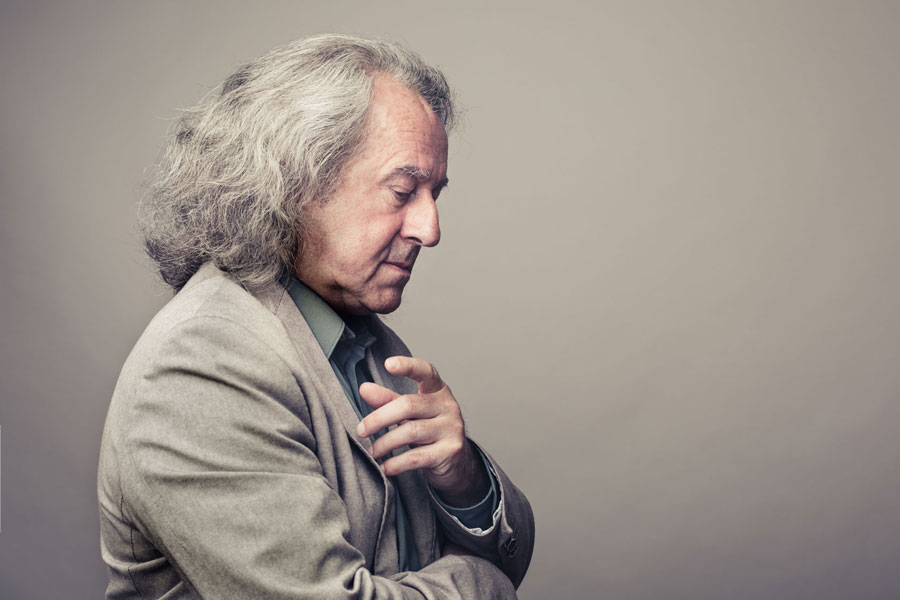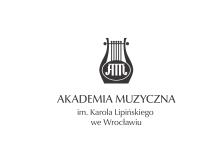The Karol Lipiński Academy of Music is the only institution of higher education in the Lower Silesia region preparing pupils for artistic careers in orchestras, ensembles, choirs, as educators, and other aspects of music including composition, conducting, music therapy and jazz.
Marek Pijarowski pursued his studies in conducting at the Academy of Music in Wrocław under Tadeusz Strugała as well as participating in International Music Courses in Weimar under Arvid Jansons. In 1977 he was awarded an Austrian government scholarship and spent nine months in Vienna, under Carl Oesterreicher at the Hochschule für Musik und Darstellende Kunst. In 1974 he began serving as the conductor’s Assistant at the Wrocław Philharmonic. The same year he took part in the All-Poland Conducting Competition in Katowice, where he won First Prize and the Special Prize of the Silesian Philharmonic. In 1980 he was appointed General and Artistic Director of the Wrocław Philharmonic serving until 2002. From 2002 until 2005 he was the Artistic Director of the A. Rubinstein Philharmonic in Łódź. He currently holds the title of the Principle Conductor of the Poznań Philharmonic.
From 1980 until 2000 he also served as the Artistic Director of the Festival of the Polish Contemporary Music in Wrocław, and between 1986 and 1987 he was the Director of the International Chopin Festival in Duszniki. In 1997 he attained the designation of profesor sztuki muzycznej conferred by the President of the Republic of Poland. Pijarowski has collaborated with the K. Lipiński Academy of Music in Wrocław, for a number of years, running the conducting class as well as serving for a period as Vice-Rector. He also serves as a Professor of conducting at the Fryderyk Chopin University of Music. Pijarowski has been decorated with the Knight’s Cross of the Order of Polonia Restituta as well as the Gloria Artis Order.
Philippe Giusiano was born in Marseille and initially studied piano at the conservatories of Marseille and Paris. At the age of twenty, he received a scholarship to continue his education at the Mozarteum, in Salzburg. He was the winner of the International Fryderyk Chopin Piano Competition in Warsaw, in 1995. He has performed throughout Europe, in Canada, Northern Africa, South America, the Middle East and Japan. His recordings have been mainly focused on the works of Chopin and Rachmaninov. Giusiano has served as a guest professor at Heisei Music College in Kumamoto, Japan, since 2008.
Modest Musorgsky finished the first version of Night on Bald Mountain on June 23, 1867, appropriately, St. John's Eve. He revised the score in 1872 when he added a chorus, and the work later went through several other revisions, though Musorgsky never heard any of them. Five years after his death, on October 27, 1886, Night on Bald Mountain was finally heard in a version collated and orchestrated by his colleague Rimsky-Korsakov, who led a performance by the Russian Symphony Society in St. Petersburg. “When I started putting it in order with the intention of creating a workable concert piece, I took everything I considered the best and most appropriate out of the late composer’s remaining materials to give coherence and wholeness to this work,” Rimsky-Korsakov stated.
The witches' sabbath of St. John's Eve, which takes place on June 23, is a popular legend in many European countries, with the scene usually taking place on the heights of an isolated mountain: the Brocken in Germany, Blokula in Sweden, or Mt. Triglav, Bald Mountain, near Kiev. There, witches, sorcerers, demons and hideous scamps of all kinds gather for a night of revelry and wanton recklessness. Musorgsky had his first idea for music based on this theme as early as 1860. The composers’ original thought was to write an opera based on Gogol’s story St. John’s Eve, but this soon turned into a plan for a one-act opera based on Baron Mengden’s The Witches. Nonetheless, the plans for a stage-work came to nothing and in 1867 Mussorgsky told Rimsky-Korsakov that he had completed a tone-picture for orchestra titled St. John’s Night on the Bare Mountain.
The following is Musorgsky's description of the piece,
"The introduction is in two series, assembly of witches; then a theme in D minor with a little development is connected to the procession of Satan in B-flat major... The procession theme without development but with an answer in E-flat minor concludes with a chromatic scale in D major. Then B minor in Russian style with a working out in variations and a half-ecclesiastic quasi-trio, a transition to the Sabbath and finally the Sabbath also in Russian style and in variations. At the close of the Sabbath the chromatic scale and figures from the introduction in two series burst out, which produces a pretty good impression."
Maurice Ravel originally composed his Piano Concerto in G major as a concerto for his own use. However, when the work was finished, Marguerite Long gave the first performance in January 1932, with Ravel conducting, rather than at the piano. Ravel had intended to write an easier concerto for his public performances but later decided to compose a concerto of fitting difficulty and resolved himself to acquire the technique. Alas, after hours of practice devoted to the etudes of Czerny and Chopin, he did not possess the digital skills or agility to perform the piece as he had written it.
Basque and Spanish melodies, jazz riffs, the influences of Mozart and Saint-Saëns can be heard throughout the G major Concerto. Fellow Basque, Gustave Samazeuilh, had spent a holiday with Ravel in the Basque land in 1911 and Samazeuilh later recalled that Ravel had sketched a “Basque Concerto” for piano and orchestra. Ravel’s Basque heritage and lifelong dedication to Spanish culture come through in the lively themes of the work. Additionally, his preoccupation with the percussive potential of the piano and his melodies show a talent for giving a sophisticated edge to jazz language.
Mussorgsky composed Pictures from an Exhibition, as a set of piano pieces, in June 1874. Maurice Ravel made his orchestral transcription in the summer of 1922 for Serge Koussevitzky, who conducted the first performance on October 22, at the Paris Opera. The original piano composition was written “in remembrance of Viktor Hartmann,” an architect and artist who happened to be a personal friend of Mussorgsky’s. Following the sudden death of the artist, critic Vladimir Stassov had organised a memorial exhibition in the Academy of Fine Arts in St. Petersburg. The exhibition featured 400 of Hartmann’s drawings, costumes, architectural designs, sketches for ornamental house objects and watercolours. Less than two months after the exhibition, Mussorgsky completed his own musical tour of the scene. The composer had chosen eleven of Hartmann’s works for his set of piano pieces. He wrote to Vladimir Stassov, “My dear generalissimie, Hartmann is seething as Boris [Godunov] seethed… sounds and ideas hand in my head and I can barely manage to scribble them on paper… The transitions are good on the Promenade… I want to work more quickly and reliably… so far, I think it is well tuned.”
There is no record of Pictures being performed during Mussorgsky’s lifetime. The composer didn’t even play the work on his extensive 1879 concert tour. It is thought that he found it too personal for the stage. Thus it was left to Rimsky-Korsakov, the musical executor of Mussorgsky’s estate, to edit the manuscript and bring it to the light. The earliest orchestration was realised by a student of Rimsky-Korsakov, Mikhail Tushmalov. Followed in 1915, by a version from Sir Henry Wood. Then Maurice Ravel unveiled his orchestration in 1922. It was the vivid pictorialization and textural variety of the piece that had caught the ear of Serge Koussevitzky, and he commissioned Ravel to create an orchestral version. Ravel’s orchestration far outshines the earlier two in the brilliance of its colours and ingenuity, while remaining as faithful as possible to the original. Only in the finale, the Great Gate of Kiev, did Ravel add notes of his own.
Alixandra Porembski, English Language Annotator


